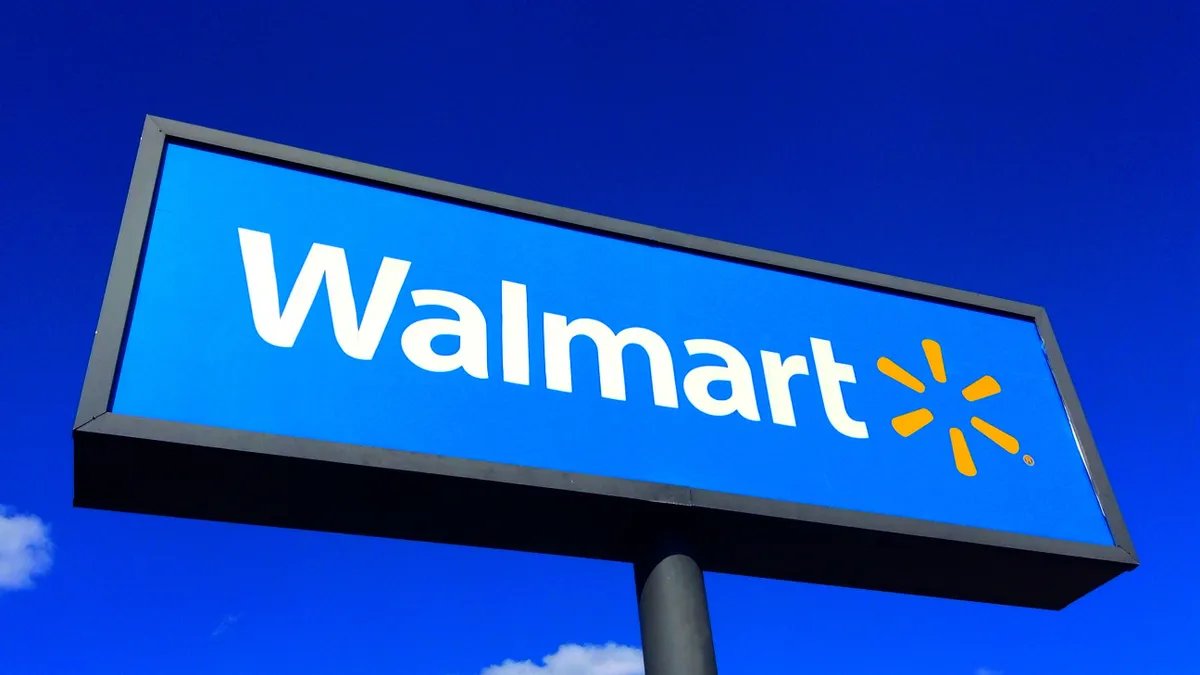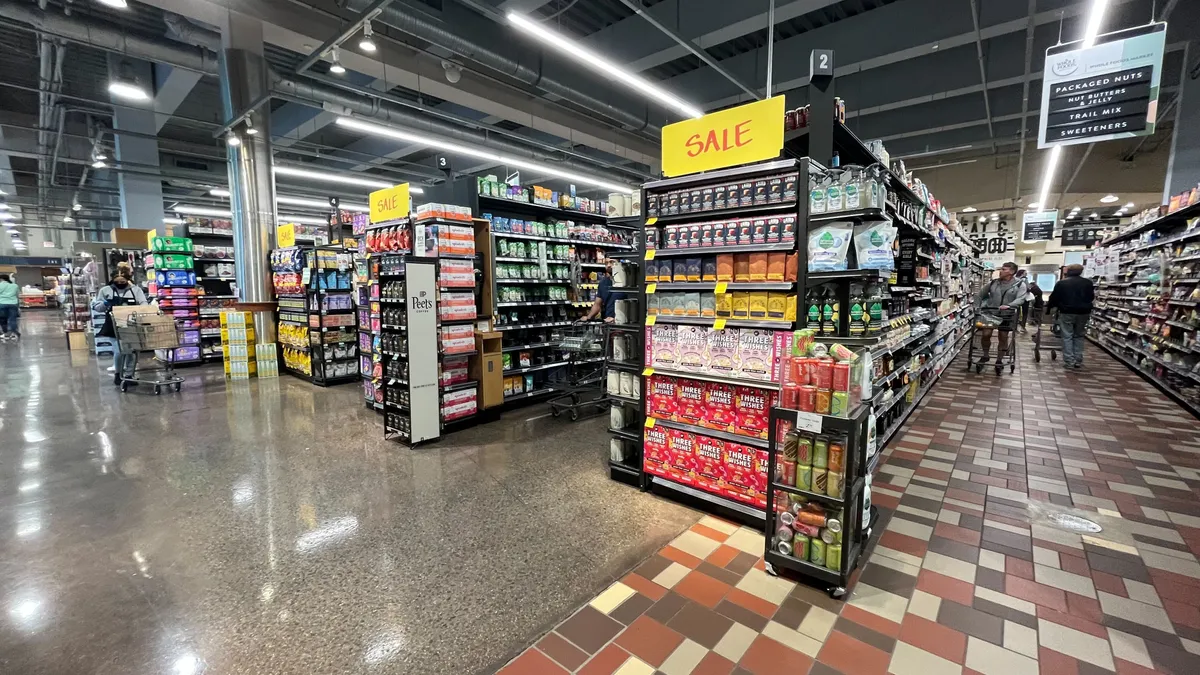Dive Brief:
- Amazon is the most popular destination for online grocery shopping, but Walmart sees larger orders and a higher percentage of customers who buy fresh and frozen foods from its site, according to a survey by Coresight Research.
- Out of the nearly 2,000 consumers Coresight polled last month, 59% said they had bought groceries from Amazon during the past year, compared to just 26% who said they’d purchased them from Walmart. However, nearly 22% of Walmart’s online shoppers said they purchased “most” or “all or almost all” of their groceries from the retailer, compared to 12% of Amazon shoppers who said the same.
- Overall, 23% of shoppers surveyed said they had bought groceries online during the past year, but nearly three-quarters of these individuals said they only purchased a “a small amount” or “almost none” of their groceries through this channel. The survey also found 51% of online shoppers mostly use store pickup, while 45% mainly depend on home delivery.
Dive Insight:
Amazon may dominate the e-commerce grocery space, but Walmart is positioned to capture more sales as consumers move their grocery shopping online. According to Coresight’s survey, the penetration gap between Walmart’s in-store and online shoppers is the narrowest of any retailer, indicating the company is doing a better job than anyone else at getting its store shoppers to buy groceries on their computer or smartphone.
Walmart has built this advantage through its aggressive click-and-collect expansion, with more than a thousand stores offering store pickup and nearly half of its locations set to offer the service by the end of this year. Not only is pickup widely available and heavily promoted by Walmart — it’s also free.
Walmart is making an equally assertive push into home delivery, with stores in 100 cities set to come online by the end of this year. The Arkansas-based retailer is a bit late to the game, with many chains having linked up with Instacart and Shipt, but it has a huge customer base and massive promotional resources. With a $10-per-order fee and the same pricing online as in stores, the service targets those profitable big-basket trips that Walmart is already getting through store pickup.
Add to this the fact that Walmart is nearly neck-and-neck with Amazon’s grocery pricing, and it’s clear Walmart is well positioned for the future.
Amazon’s acquisition of Whole Foods will go a long way towards helping the e-tailer boost the size of its online orders. Stores in seven cities now offer home delivery through Prime Now, while Amazon’s main site is pushing a wide range of 365 Everyday products. Free two-hour delivery Whole Foods now offers to Prime members on orders $35 and up is particularly enticing to shoppers, and challenges the many Instacart-enabled retailers out there on price, according to a recent Barclays report.
Will Amazon win out over Walmart in the online grocery wars? It’s hard to say, but the more important question at this point seems to be: What about other retailers?
“Walmart, Kroger, Target and Costco are the only retailers with meaningful numbers of online grocery shoppers,” Coresight noted in its report.
This all underscores a harsh reality for many grocers — that the nation’s largest retailers are the ones set to profit from online grocery, and that the race seems it will primarily come down to Amazon versus Walmart. For many supermarkets, online selling has become an additional cost rather than a growth opportunity.
At the same time, the number of consumers willing to shop for groceries online is accelerating — the Food Marketing Institute and Nielsen project 70% penetration in as little as four years — and not all of them are necessarily going to fall to the largest players. Grocers of all sizes still have an opportunity capture these shoppers and build sales, Coresight notes.
The key, it noted, is figuring out how to build basket size among both new and existing customers.
“Those retailers interested in growing the online grocery market must do more than simply boost participation; they must also convert occasional and small-basket shoppers into regular, full-shop customers,” the report stated.










